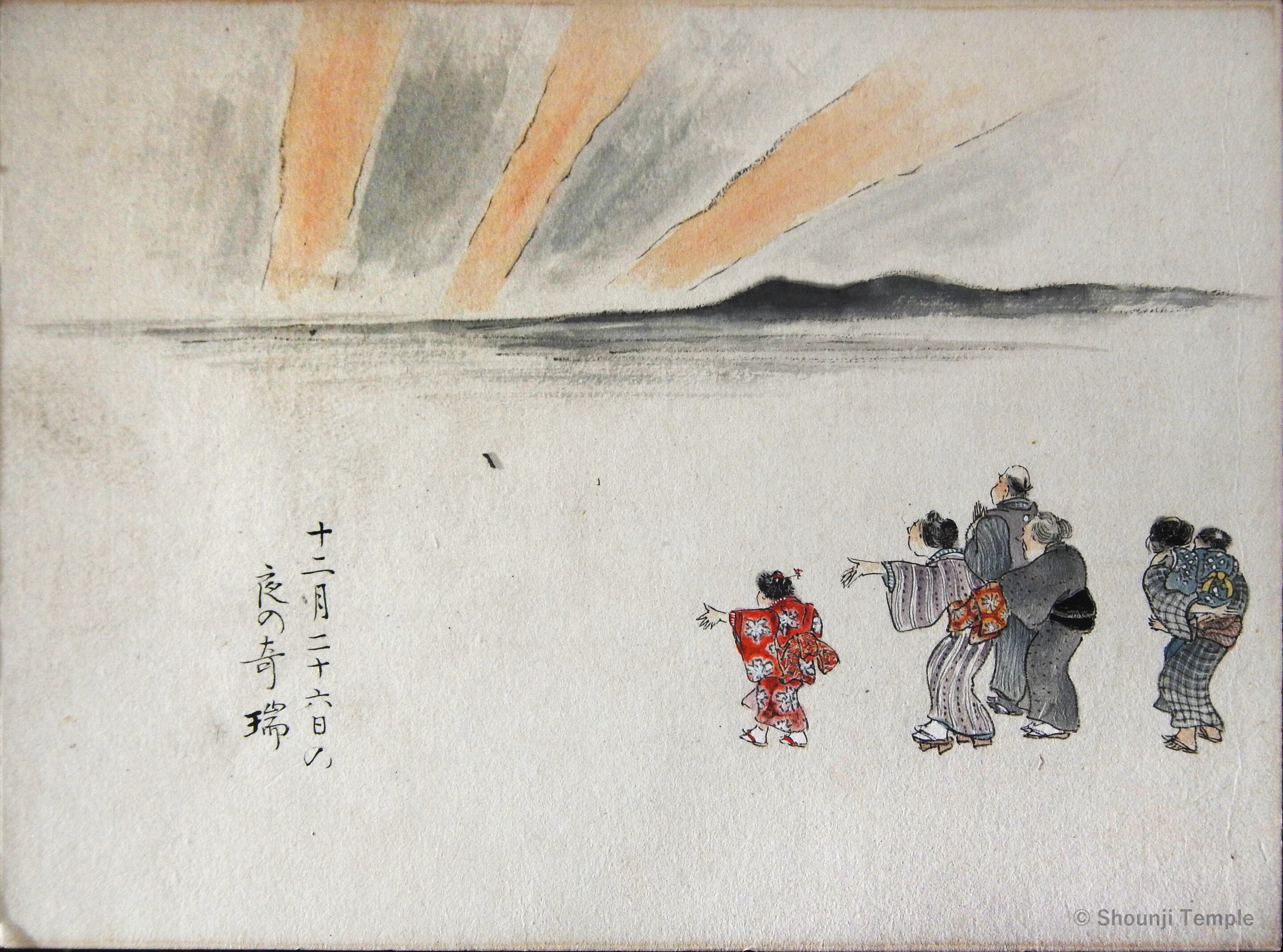A Japanese auroral drawing depicting an observation on February 4, 1872, at Okazaki, has recently been contrast-enhanced and reproduced with courtesy of the Shounji Temple. This captivating artwork captures a significant historical event when an awe-inspiring phenomenon of aurora borealis was observed and served as the inspiriation for scientific exploration and inquiry.
In early November of this year, an exciting celestial spectacle occurred when an aurora borealis was observed at shockingly low latitudes, reaching as far south as Italy and Texas. This remarkable event is indicative of the impact of a solar coronal mass ejection on the Earth’s magnetic field and atmosphere. The celestial display lent insight to the cosmic forces at play in our solar system. The incredible scale and beauty of this natural light show were nothing short of a grand event, although it pales in comparison to the colossal solar storm that took place in February 1872.
This remarkable solar storm generated an enormous auroral display, encircling the globe and yielding awe-inspiring auroras even in the tropical regions of Bombay and Khartoum. A recent international study conducted by a multi-national, multidisciplinary team of scientists from nine countries has provided new insights into the origins and wide-ranging terrestrial impacts of this extraordinary and historic event. Their findings reflect that these large-scale geomagnetic events are more common than previously thought, highlighting the potential vulnerabilities of our modern technological infrastructure to such extreme solar storms.
Nagoya University in Japan, the US National Solar Observatory, and the Royal Observatory of Belgium led a collaborative endeavor involving 22 researchers to meticulously review historical records and employ current techniques to analyze the impacts of the Chapman-Silverman storm. This particular storm, which originated from a medium-sized yet intricate sunspot group near the solar disk center, emits one of the most severe magnetic storms in known history. Their examination emphasized the critical importance of preserving and deciphering historical data to evaluate, understand, and mitigate the impact of similar solar storms in the future.
The team analyzed more than 700 auroral records, revealing a magnificent display that illuminated the night sky from the polar regions to the tropical regions, indicating the widespread impact of this solar storm. Their research confirmed that this event was one of the most extreme geomagnetic storms in history, rivaling the size of the Carrington storm in September 1859 and the NY Railroad storm in May 1921.
Although extreme solar events are a rare occurrence, the research serves as a reminder of the potential catastrophic impact of a superstorm on modern society. However, noteworthy is that recent auroral displays have displayed a renewed interest in the skies with sun’s impending maximum of Solar Cycle 25 to peak in 2025. This serves as a tantalizing opportunity to study such phenomena in the coming years and will be of significant interest to the public as well as the scientific community.
The findings of this study, which have recently been published in The Astrophysical Journal, emphasize the need for continued scientific research on space weather and increasing preparedness for potential extreme space weather events. A cach ultimate goal is to advance our understanding of the universe and develop effective strategies to mitigate the impact of these significant events for future generations.


